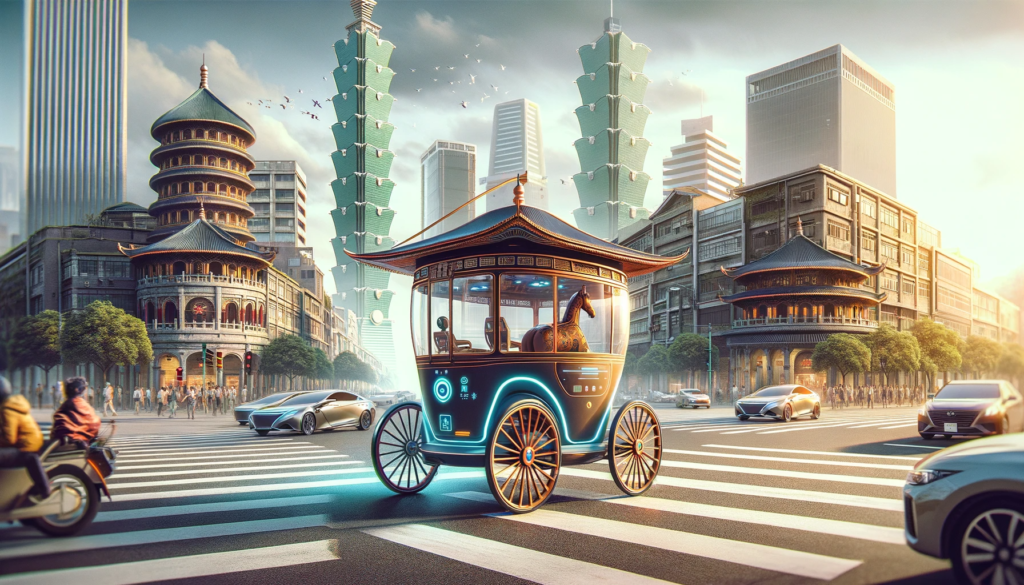Taipei, the bustling capital of Taiwan, is on the cusp of a transformative era in urban transportation with the introduction of the self-driving gharry. This innovative mode of transportation is not just a leap into the future of mobility but also a nod to the past, marrying the charm of traditional horse-drawn carriages (gharries) with cutting-edge autonomous vehicle technology. In this article, we delve into the details of this exciting development, exploring its implications, challenges, and potential to revolutionize travel within the city.
Historical Context and Modern Innovation

The term “taipei self-driving gharry,” historically referred to horse-drawn carriages used in parts of Asia, conjures images of a bygone era of simplistic yet elegant transport. Taipei’s self-driving gharry, however, is a modern marvel, epitomizing the city’s commitment to innovative and sustainable urban transport solutions. By integrating autonomous technology into a form factor reminiscent of traditional gharries, Taipei pays homage to its cultural heritage while embracing the future.
The self-driving gharry project in Taipei is part of a broader initiative to reduce traffic congestion, minimize carbon emissions, and enhance the efficiency of public transportation. This initiative aligns with Taiwan’s progressive stance on technological advancements and environmental sustainability. The autonomous gharries are designed to operate seamlessly alongside conventional vehicles, offering a unique and eco-friendly travel option for both residents and tourists.
Technology Behind the Self-Driving Gharry
At the heart of the Taipei self-driving gharry is a sophisticated array of sensors, cameras, and artificial intelligence algorithms. These components work in tandem to navigate the bustling streets of Taipei, ensuring safe and efficient travel. Lidar (Light Detection and Ranging) sensors provide 360-degree visibility, enabling the vehicle to detect and respond to other vehicles, pedestrians, and obstacles. Advanced AI algorithms process this data in real-time, making split-second decisions to maintain safety and optimal routing.
The gharries are also equipped with V2X (Vehicle-to-Everything) communication systems, enabling them to interact with traffic signals, other vehicles, and city infrastructure. This technology allows for smoother traffic flow and reduces the likelihood of accidents. Furthermore, the integration of edge computing ensures minimal latency in data processing, crucial for the split-second reactions required in dense urban environments.
Impact on Urban Mobility and Society
The introduction of the Taipei self-driving gharry is expected to have far-reaching implications for urban mobility. Firstly, it promises to reduce traffic congestion by offering an efficient and reliable alternative to personal vehicle use. The gharries operate on fixed routes, much like buses, but with the added flexibility of small-scale, on-demand operation. This hybrid approach caters to the diverse needs of a metropolitan population, providing a practical solution for both regular commutes and spontaneous travel needs.
Moreover, these autonomous vehicles are poised to significantly reduce carbon emissions. Being electrically powered, they contribute to Taipei’s efforts in promoting a greener, more sustainable urban environment. This shift aligns with global efforts to combat climate change and positions Taipei as a leader in eco-friendly urban development.
Challenges and Future Directions
Despite the promise, the rollout of the self-driving gharry faces several challenges. One of the primary concerns is public safety and acceptance. Ensuring that these autonomous vehicles can safely navigate the complex and often unpredictable urban landscape of Taipei is paramount. Public trust in autonomous technology is still evolving, and rigorous testing and transparent safety protocols are essential to gain widespread acceptance.
There are also regulatory hurdles to consider. The legal framework governing autonomous vehicles is still in its infancy, and Taipei will need to develop and implement comprehensive laws and guidelines to facilitate the smooth integration of these vehicles into the existing transportation infrastructure.
Looking forward, the potential of the Taipei self-driving gharry extends beyond just transportation. These vehicles could become mobile platforms for a range of services, such as on-the-go retail or advertising, further integrating them into the fabric of city life. There is also the potential for these gharries to evolve into a more personalized form of transport, offering tailored experiences for special events or tourist tours, enhancing the cultural appeal of Taipei.
Conclusion
The Taipei self-driving gharry represents a bold step into the future of urban transportation, blending tradition with innovation. By addressing current urban challenges like traffic congestion and environmental impact, these autonomous vehicles are set to revolutionize the way people move around the city. While challenges remain, the potential benefits in terms of efficiency, sustainability, and cultural enrichment are immense. As Taipei leads the way with this pioneering initiative, the self-driving gharry stands as a testament to the city’s commitment to embracing new technologies while honoring its rich heritage.

the gorila is news magazine . gorila magazine will upload general news ,fashion ,tech,halth,business etc post
contact for author robston189@gmail.com


